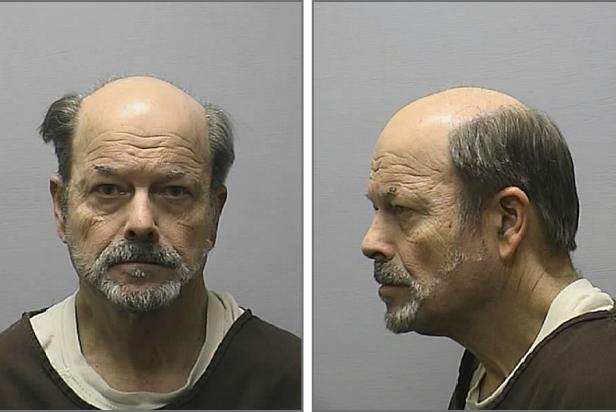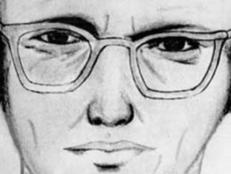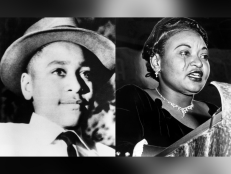Crime History: The "Intensely Ordinary" BTK Killer Who Got Away With Murder For 30 Years
Dennis Lynn Rader murdered at least ten people in Wichita and Park City, Kansas, between 1974 and 1991.

Kansas Department of Corrections
Dennis Rader was a prime example of the psychopath hiding in plain sight. Confession of a Serial Killer, Katherine Ramsland’s book, offers a peek into the mind of the man who would be known by the letters “BTK” — Bind Them, Torture Them, Kill Them. Let’s look back at his 30 years of stalking and murdering while hiding beneath a mask of normalcy, family, and his church.
Rader came to be known as either the “BTK Killer” or the “BTK Strangler,” depending on what news outlet was reporting on his crimes — he suggested both monikers to the press himself.
Rader, who was born in 1945, spent some of the turbulent 1960s in the Air Force before returning to Kansas and marrying his wife, Paula, in 1971. By 1974, he was working for ADT Security Services, ostensibly helping people to feel safe and secure in their homes. In what might be considered tragic irony, 1974 was also the year of his first murders.
It was January 15 when Rader “put down” the Otero family in their Sedgwick County home. He later admitted to the premeditated strangulation of four members of the Otero family that night: parents Joseph and Julie, and children Josephine and Joseph Junior. Charlie Otero, the 15-year-old son, discovered their bodies when he returned home later in the day. Authorities later discovered that Rader had stolen a radio and a watch from the Otero home. He had also, disturbingly, masturbated onto Josephine’s body after she had hung to death in the home’s basement.
Later that year, on April 4, Kathryn Bright walked into her apartment with her brother Kevin, expecting nothing out of the ordinary. Unfortunately, Rader had already gained entry and was waiting for them. Rader reportedly strangled Kathryn before he stabbed her, and he shot Kevin multiple times in the head. Fortunately, Kevin survived by playing dead and was able to give information to police. “[A]n average-sized guy, bushy mustache, ‘psychotic’ eyes,” Bright told police that the killer had forced him to tie his sister to a chair in a secluded bedroom before he tried to deal with Bright. When the killer went back to finish off Kathryn, somehow Kevin managed to stumble to the door and got away.
Something, perhaps pride, prompted Rader to write a letter taking responsibility for the murder of the Oteros. In October 1974, he took that letter and put it into one of the books at the Wichita Public Library. It turned into a proverbial landmine just waiting to go off for the person who next got that book. When found, it quickly was given to a local newspaper. In the letter, Rader asked for the news outlets to call him the “BTK Strangler.”
The next murder that could be linked to Rader wasn’t until St. Patrick’s Day, 1977. Rader told authorities that on that March 17, he had been watching one residence to hit for his next kill, but when nobody answered the door, he ended up at the door of Shirley Vian. He forced Vian to secure her children in the bathroom, out of the way, before tying her up, putting a plastic bag over her head, and strangling her with a rope until she was dead. When the kids began banging at the bathroom door and screaming, Rader worried that a neighbor might get suspicious and come to check, so he gathered his things and left.
He went on to kill four more women before he was finally captured. On December 8, 1977, Nancy Fox lost her life. On April 27, 1985, Rader’s neighbor Marine Hedge was slain, with her body later found on the side of the road. Vicki Wegerle was killed on September 16, 1986. Finally, Dolores E. Davis was strangled on January 19, 1991.
Somehow, throughout this murderous spree, Rader had managed to keep himself under control enough to keep his job with ADT. He was fired, however, in 1988.
By 1991, he was working as a Park City compliance supervisor. As part of his job, he was allowed to carry a tranquilizer gun to deal with stray animals. During his spare time, he was active in his church — even president of the church council — and a troop leader for local Boy Scouts. His urges to kill were apparently sated for some reason, perhaps by keeping employed and busy, perhaps due to his advancing age.
But then, in 2004, the local press acknowledged the 30th anniversary of the Otero murders. The news stories prompted the killer — his “Factor X” — in Rader to surface once more. He sent letters and packages to the local outlets, filled with details and items related to the murders. He even made a word puzzle about his crimes that went to the media.
His perceived grasp of technology and his inherent trust in authority may have made him a little too overconfident, however. He sent a message to the police in which he asked if he could safely send them a floppy disk without it being traced to him, and they answered — lying, of course — that he could. He believed them and included a floppy disk in one of the packages of clues that he’d left around the city. A forensic examination of that disk led police to Rader’s office in his church. They were also able to match one of the Rader family vehicles to one sighted on a surveillance/security tape from one time he’d dropped a package. Finally, a DNA sample from his daughter was compared to the evidence in custody as they put together the case against him.
Rader was arrested on February 25, 2005. He was charged with 10 counts of first-degree murder. On June 27, 2005, he pleaded guilty on all counts. Because the crimes were committed before 1994, when Kansas reinstated the death penalty, Rader could not be sentenced to death. He was sentenced to 10 life sentences. At last report, Rader was in the custody of the El Dorado Correctional Facility in Kansas.









